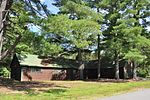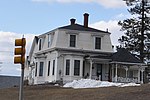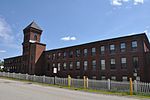Bear Brook (Suncook River tributary)
Bear Brook is a 10.0-mile-long (16.1 km) stream located in central New Hampshire in the United States. It is a tributary of the Suncook River, part of the Merrimack River (and therefore Gulf of Maine) watershed. Its entire course is within Bear Brook State Park. Bear Brook begins at the outlet of Hall Mountain Marsh near the four-corner intersection of the towns of Allenstown, Deerfield, Candia, and Hooksett. The brook descends to the north, through Deerfield, then turns west and reenters Allenstown. Nearing Deerfield Road, the brook is impounded by Catamount Pond, with a state park beach and picnic area. The brook flows northwest from the pond and reaches the Suncook River in less than a mile.
Excerpt from the Wikipedia article Bear Brook (Suncook River tributary) (License: CC BY-SA 3.0, Authors).Bear Brook (Suncook River tributary)
Bombay Road,
Geographical coordinates (GPS) Address Nearby Places Show on map
Geographical coordinates (GPS)
| Latitude | Longitude |
|---|---|
| N 43.171388888889 ° | E -71.394722222222 ° |
Address
Bombay Road
Bombay Road
New Hampshire, United States
Open on Google Maps











